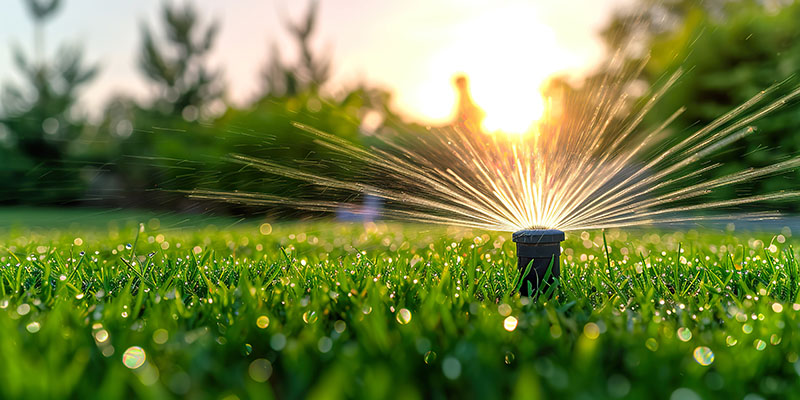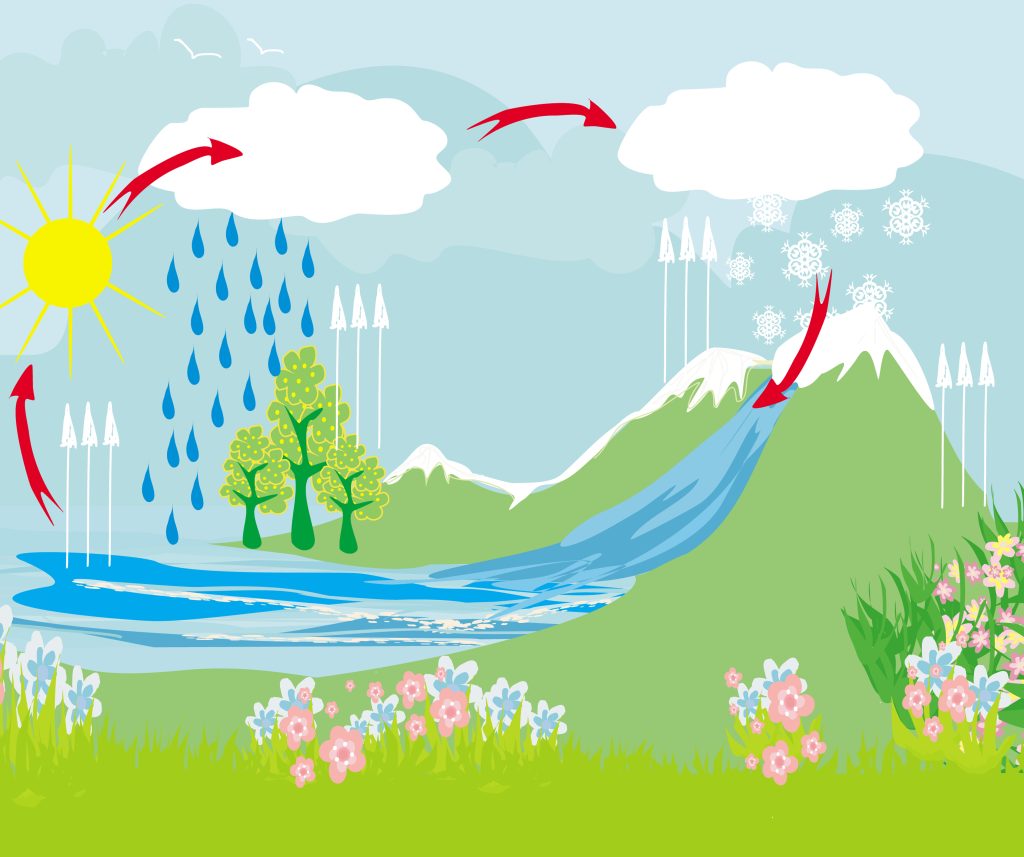
How Salt Lake City Public Lands Practices Responsible Watering.
You may see irrigation systems running in our parks and athletic fields this spring, summer, and fall. And you may have questions. Why is the water on now? Is this really the right time of day (or season) to be running sprinklers? I only water before sunrise or after sunset when it’s most efficient. Doesn’t Salt Lake City care about sustainable water use?
Salt Lake City staff does care about watering Public Lands’ properties responsibly. To do so, we weigh many factors when determining when and how much to water the various lawns across our parks. The lawn type, current condition, stressors (like heat and traffic), and recent precipitation or snow melt are all considerations when watering. Water can only go so far if the lawn and soil are not adequately cared for otherwise. So, we also rely on proper aeration, efficient sprinkler heads, absorption products, and cloud-based technology to help us use water as effectively as possible.
In this blog, we’ll dig a little deeper into Salt Lake City’s best practices for watering. But first, we need to understand some mechanics of water retention and evaporation in the environment.

What’s the deal with evapotranspiration?
Everything we do when it comes to watering is affected by evapotranspiration. Evapotranspiration is both evaporation and transpiration. It is the process by which water moves between the surface of our land, through plants, and into the atmosphere. Utah’s arid climate requires a deliberate balance of vegetation (trees, shrubs, grasses) and water to retain valuable moisture for plants in our environment.
Underwatering can cause us to lose valuable ground when it comes to retaining water. However, when we water effectively, we foster cooler, more livable spaces by maintaining the health and longevity of the plants and trees in our parks and yards. When we achieve the right balance between vegetation and water usage, we retain that water, making all we do more sustainable.
Let’s get back to those running sprinklers.
Early Season Testing and Repair
Have you seen the irrigation systems running yet? Does it seem too soon? Sprinkler maintenance is a full-time job across more than 200 park properties and athletic fields.
Over the winter, our water lines may need repair, sprinkler heads can be broken, and our staff may find ways to optimize and improve our systems. With hundreds of water lines and thousands of sprinkler heads across our properties, early-season testing and maintenance take time.
Spring irrigation maintenance begins on April 1, which allows irrigation systems to be up and running by May. When temperatures start to warm, we begin testing our lines and sprinkler heads. This process starts early in the morning and may continue into the evening as we move between parks to make necessary repairs or additions to our systems. During this testing period, you could see sprinklers running, even though it may seem too early in the season.
Does time of day matter for watering?
Yes. Our watering schedule, under ideal weather conditions, is from 8 pm to 10 am. During these hours, the lawns are typically less populated, and cooler temperatures brought on by the setting sun offer more absorption than evaporation. However, there are other reasons you may see us running irrigation systems at unexpected times.
Overseeding and New Sod
Both seed and sod require additional and consistent water to develop established root systems. While watering may appear to be wasteful, maintaining and improving an existing lawn is always more efficient than starting from scratch.
We carefully assess lawns based on their current condition, the level of anticipated traffic, and sun/shade conditions to determine when seeding or new sod is needed. Additionally, recently sodded or seeded areas are roped off to limit traffic and ensure successful new growth.
Anticipated High Traffic
Our parks see a lot of use and foot traffic. If an event is scheduled, we may increase water schedules before and after the event to reduce the stress on our lawns. Again, maintaining the existing lawn is much more efficient than replacing it.
Sand-Based Fields and Sport Turf
Many of our fields are sand-based, so they can endure heavier traffic. Sand helps ensure a more durable turf but produces warmer air temperatures. Often, staff will increase watering before an event to keep the field temperatures down, protecting the lawn and the people who recreate there.
Excessive Heat
During periods of excessive heat, some lawns must be watered more frequently to maintain their health and prevent over-drying or excessive weed growth.
How we are using technology to enhance sustainability:
When it comes to sustainable watering practices, two factors matter: The quantity of water added and the rate at which it absorbs rather than evaporates. To optimize these two factors, we use technology that helps us gauge the rate of evapotranspiration and mitigate evaporation.
WeatherTRAK and Water
Many situational and environmental factors go into decisions about when and how much to water. In Utah, the weather can change rapidly. For these reasons, we rely on WeatherTRAK cloud-based software to assist in evaluating weather, current environmental conditions, and water usage. It also allows us to adjust watering settings, monitor for damage to the lines, gauge water flow, and detect potentially damaged surface equipment.
Cascade Plus Fertilizer for Better Absorption on Fields
Watering is important but if soil is not properly prepared and maintained, the water can actually begin evaporating before it can be absorbed. Aeration solves this issue in most of our parks. However, in athletic fields and sand-based sport fields, this challenge can be a little more complex.
In our fields, we use special water additive to help the ground better absorb water and nutrients. While cost-prohibitive for use across all our parks, we use it in sport fields because water retention is crucial as they absorb heat more quickly. Additionally, sports fields often endure more stress due to heavier foot traffic. When combined with proper aeration, the use of this product improves absorption by up to 33% for up to 4 to 6 months.
HOW CAN YOU HELP
So many factors go into proper watering for our parks. If you recreate in our Public Lands, there are a few ways you can help.
- When fields are wet or muddy, please wait for them to dry out before heavy use
- Please keep wheels on designated roads and pathways
- Neither people or dogs may dig in the park
- Grill only in designated areas
- If you see a sprinkler head that is gushing or pooling, please call (801) 972-7800 ASAP
- If you see vandalism to our equipment, please make a report on the SLC Mobile App or by calling (801) 972-7800
Please reach out to our staff with questions at (801) 972-7800. We look forward to seeing you out in our parks!